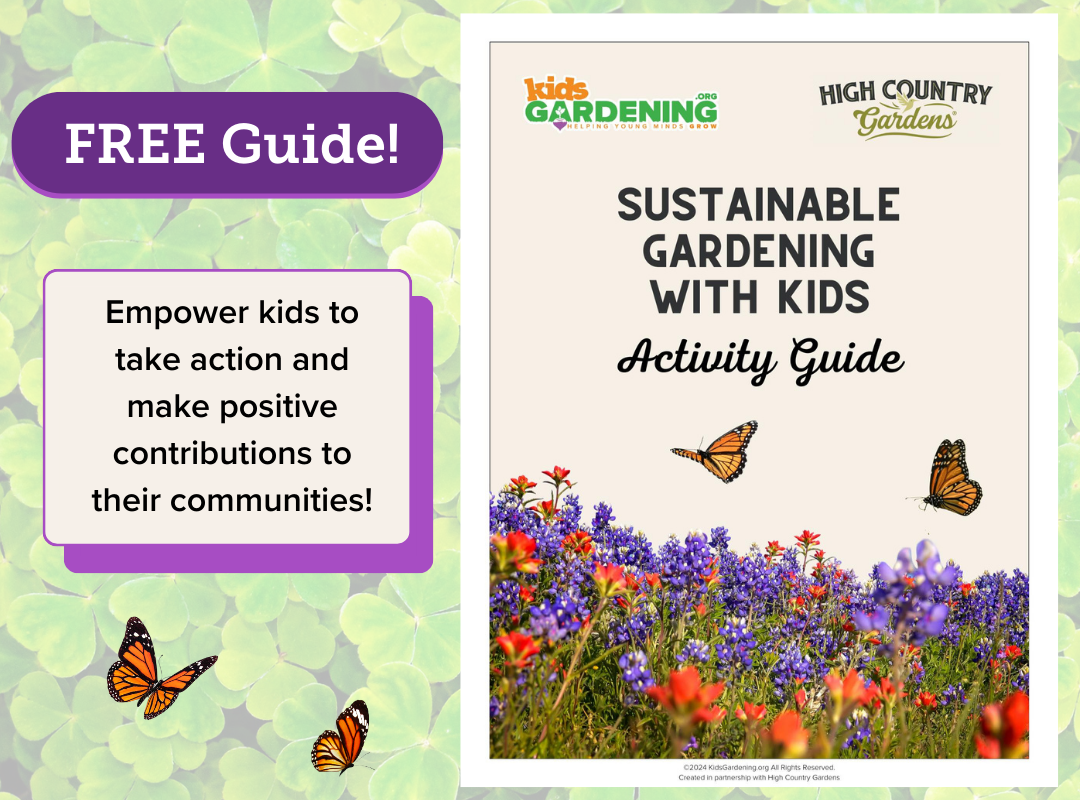Materials
- Library/Internet access
Objective:
Through this lesson, students will identify environmental challenges facing local gardeners or farmers and then search out solutions inspired by sustainable growing practices from around the world.
Background Information
As human populations continue to grow in size and spread across the globe, we alter the natural world to meet the needs of our communities (including basic needs of food, water, and shelter, as well as other non-essential desires). As we do so, the environmental challenges we create also increase in number and scale. Environmental concerns shared among communities around the globe include:
- Habitat loss for wildlife as human settlement expands.
- Soil erosion caused by land cleared for agriculture and urban development.
- Polluted water, soil, and air, caused by manmade chemicals and products.
- Drought caused by mismanagement of water and heavy agricultural demands.
- Increases in severe and extreme weather, also caused by climate change.
- Flooding, due to loss of wetlands and other natural catchment systems.
As a global community, we must come together to make better choices for our environment and alleviate these issues. Identifying actions we can take in our landscapes, our gardens, and our agricultural fields that help us work in greater harmony with natural systems is an important step toward finding solutions to these challenges.
Laying the Groundwork
Arrange for students to interview local environmental leaders in your community to learn more about pressing issues/problems in your community — specifically, issues related to landscape and farmland management. To find potential interviewees you may want to contact your:
- County Extension Service
- Local USDA Natural Resources Conservation Service
- City’s environmental services department
- Local state or national park service
- Local chapter of Keep America Beautiful
- Local farmers or farmers’ organizations
Interviewing multiple individuals will provide a broader perspective on your local issues and allow students to spot trends and help them better understand the complexity of the issues. You can opt to have students conduct one-on-one interviews, or group interviews.
Before making contact with local experts, ask students to draft their questions and then work in groups to refine them prior to the scheduled interview time. Encourage them to ask questions that will help them identify local problems (e.g., a river or other waterway challenged by pollution, tracts of land experiencing erosion, specific local animal habitats that are under pressure, etc.). Depending on the skill of your students and time available, students can conduct interviews through email or in person/virtually. Ask students to keep in mind how these local issues might offer insights into issues on a global scale.
After conducting the interviews, discuss your findings and use feedback to create a detailed list of pressing environmental concerns in your community.
Exploration
- With your list of concerns in hand, choose one or more issue to explore more deeply. You may want to choose one concern and have the whole group focused on coming up with different solutions for solving that one problem (individually or divided into smaller groups). Alternatively, you could divide the class into groups and have them each focused on coming up with solutions for different issues.
- Begin by investigating and compiling background information related to your issue. What caused the environmental disturbance? How long has this been a problem? What impacts is your issue having on the local community and ecosystem? Why is it important for this problem to be addressed?
- Next, ask students to design solutions for their chosen issue with a focus on using sustainable garden or farm practices. Although they can certainly brainstorm solutions based on their own personal experiences, ask that they combine their creativity with a search for solutions that may already be in place, drawing on the knowledge and experience of gardeners and farmers from around the globe. They can refer to information they gathered in the Laying the Groundwork interviews, conduct additional interviews, or look for digital and/or printed resources. Ask them to try and identify at least one existing solution from past or present gardeners/farmers to help lend support to their own proposed solution.
Here are a couple of articles from KidsGardening that might be able to help them get started on their research if they need some guidance:
- Native Wisdom: Growing Techniques of Indigenous Peoples
- Can School Gardens Impact Food Waste in America?
- Garden Basic: Carbon Cycle and Carbon Sequestration (Gardening for Carbon Management)
Ask student to create a formal proposal to share their solution, either in a written document or in presentation form. In this proposal, make sure they also analyze the benefits and challenges of their solution along with the associated costs. What impact do they hope to make? How easy would this solution be to implement and sustain?
Making Connections
Explore examples of other people around the world who are working to implement strategies to restore their environment by drawing on traditional knowledge. The following videos may be appropriate to help you explore this topic:
The Forested Garden: What is a Food Forest? With Geoff Lawton
Branching Out
Extend and expand this lesson from one focused on local environmental concerns to environmental challenges on a global scale. Have them choose one problem to explore. The Food and Agriculture Organization of the United Nations is a good place to start when exploring global environmental issues. You can find information about their sustainable development goals for the planet at: http://www.fao.org/sustainable-development-goals/en/



